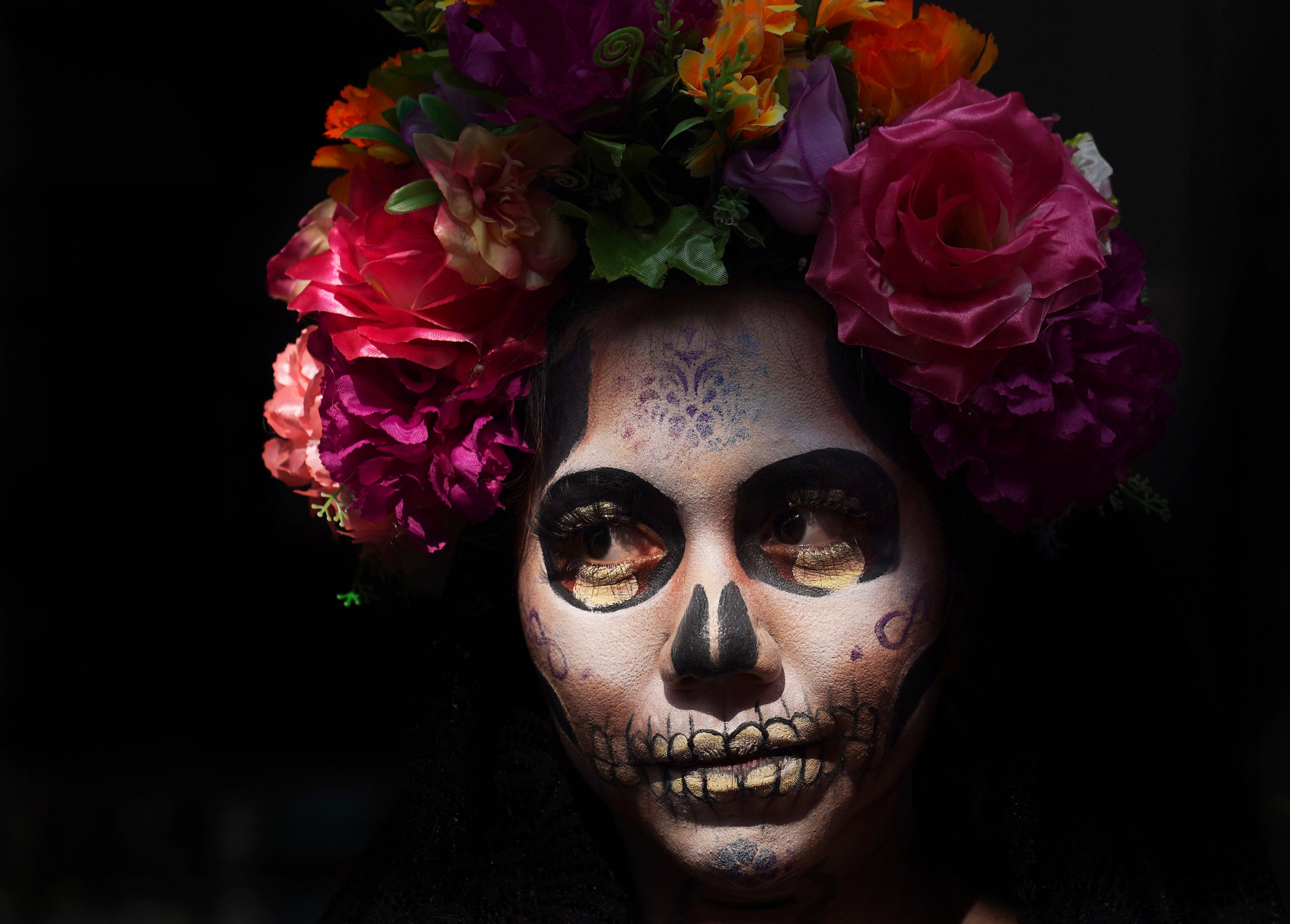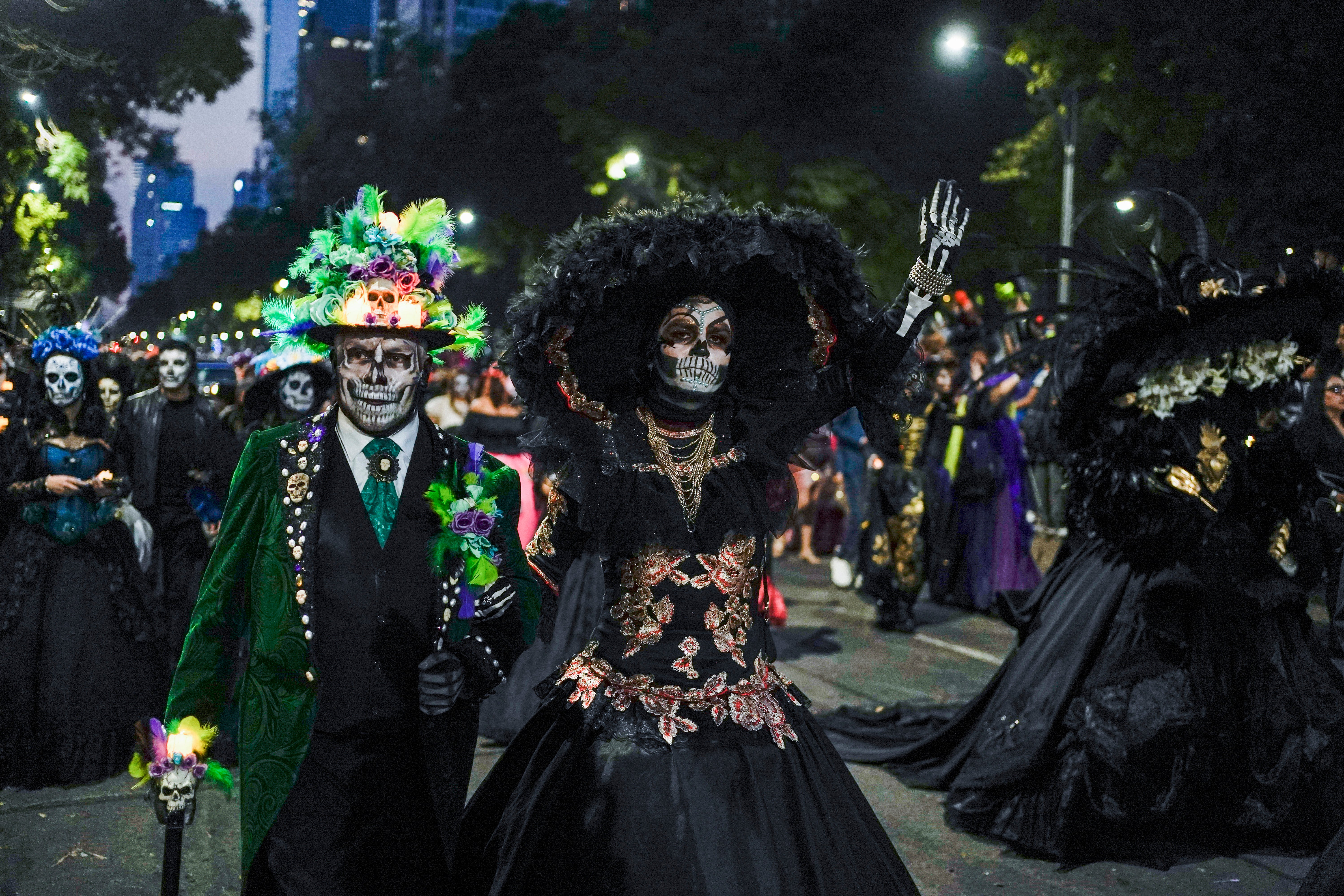Day of the Dead: What is the Mexican festival honouring lost ancestors?
Dia de los Muertos marries Aztec and Catholic customs to remember the spirits of deceased loved ones

Your support helps us to tell the story
From reproductive rights to climate change to Big Tech, The Independent is on the ground when the story is developing. Whether it's investigating the financials of Elon Musk's pro-Trump PAC or producing our latest documentary, 'The A Word', which shines a light on the American women fighting for reproductive rights, we know how important it is to parse out the facts from the messaging.
At such a critical moment in US history, we need reporters on the ground. Your donation allows us to keep sending journalists to speak to both sides of the story.
The Independent is trusted by Americans across the entire political spectrum. And unlike many other quality news outlets, we choose not to lock Americans out of our reporting and analysis with paywalls. We believe quality journalism should be available to everyone, paid for by those who can afford it.
Your support makes all the difference.Mexico celebrates Day of the Dead, or Dia de los Muertos, once again on 1 and 2 November, its annual festival honouring the memory of lost relatives and loved ones by welcoming their spirits back to the land of the living.
The dates are believed to mark the brief moment every year in which the door to the afterlife stands open, allowing the souls of lost children to return to our present on the first of the month and those of deceased adults on the second.
Really a celebration of life, the occasion is a fiesta of food, drink, dancing and song, famous around the world for its ghoulish pageantry, vibrant costumes, skull motifs and abundant flowers.
Revellers dressed in face paint and fine clothes typically gather to decorate graveyard altars and shrines, memorialising particular people with candles, incense, garlands of marigolds, water and trinkets associated with them, perhaps a favourite book or a guitar.
“Ofrendas” (offerings) of favourite foods are also laid out in tribute to their memory, often sugar skeletons or pan de muerto (“bread of the dead”), as families gather for picnics and partying, reminding their relatives that they are still loved, even in death.
Parades are also held featuring “alebrijes”, spectacular creatures homemade from papier-mache, to add to the atmosphere.

Another popular figure likely to be included in such scenes is the iconic La Catrina, a skeleton lady in an elegant feathered hat and make up. She was designed by cartoonist Jose Guadalupe Posada around 1910 to satirise the adoption of European aristocratic fashions in Mexico and to remind ordinary people not to harbour pretensions to be anything other than they truly are. La Catrina famously appears in Diego Rivera’s mural “Dreams of a Sunday Afternoon in Alameda Park”, painted in 1946-47.
The Day of the Dead is an entirely different approach to reflecting on the finite nature of human experience, the diametric opposite of the funereal gloom in which mourning is observed elsewhere.

Mexico’s best known holiday marries Aztec traditions honouring one’s ancestors – specifically, the tribute once paid to the goddess Mictecacihuatl (“Lady of the Dead”), who ruled Chicunamictlan, the underworld – with Roman Catholic observations of All Saint’s Day, which were introduced to Latin America by Spanish colonists in the 1500s.
That said, it is not the only nation to observe such a custom: Brazil’s Dia de Finados and All Hallows’ Day are two loosely equivalent examples.
Colombia, Ecuador, Honduras, El Salvador, Nicaragua, Peru and Venezuela all have their own variations on Day of the Dead too.
Join our commenting forum
Join thought-provoking conversations, follow other Independent readers and see their replies
Comments